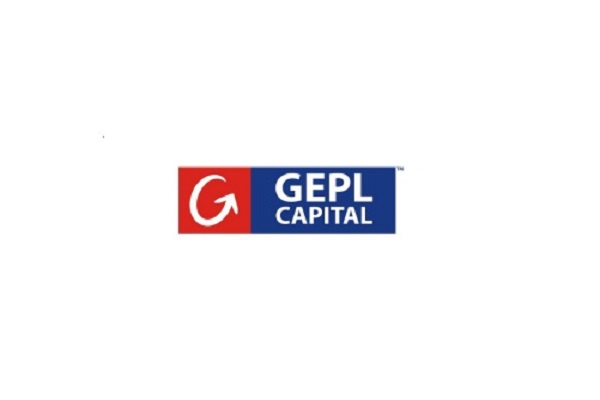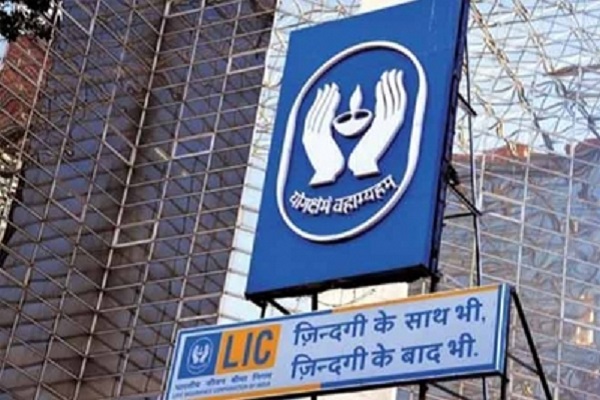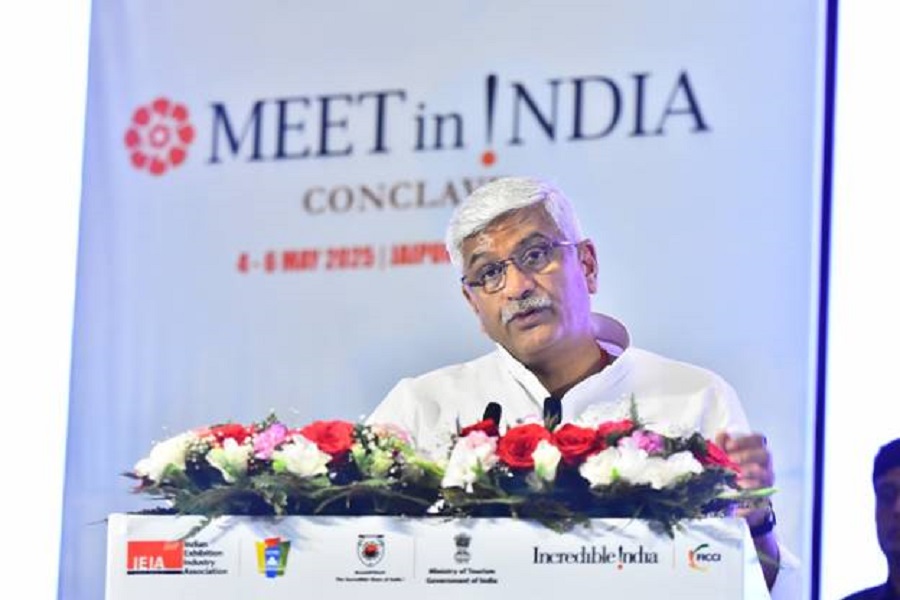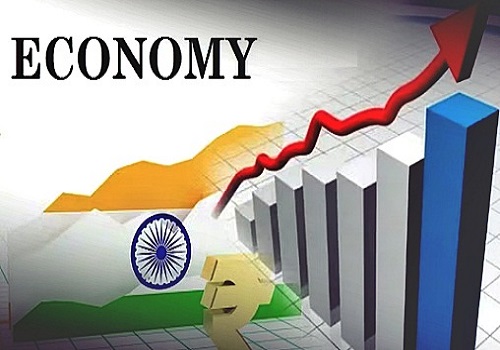India`s Life Insurance Sector Set for Multi-Decade Growth; expected to clock a CAGR of ~14.5% over FY23–35E: PL Capital

PL Capital, one of India’s most trusted financial services organizations, in its latest report on Life Insurance cited that India’s life insurance industry is entering a phase of accelerated growth, backed by strong macroeconomic fundamentals, rising financial inclusion, and evolving customer preferences. According to PL Capital, the industry is expected to clock a compound annual growth rate (CAGR) of ~14.5% over FY23–35E, making it one of the most promising segments in India’s financial services space.
Expansive Growth Headroom
Despite steady expansion in recent decades, India’s life insurance penetration remains significantly below global benchmarks. At 2.8% of GDP in FY24, it trails the developed market average of 5.6%. Similarly, insurance density in India stood at just USD 70 per capita, compared with USD 3,182 in advanced economies.
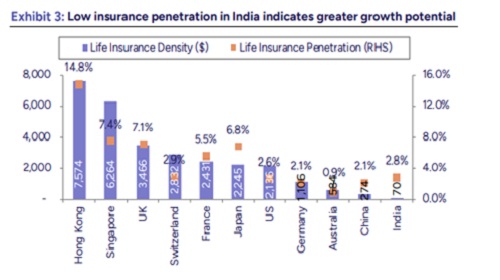
This gap highlights a multi-decade opportunity for the industry, particularly as households increasingly allocate savings towards financial instruments. With nominal GDP projected to grow at ~10.5% annually, coupled with rising financial awareness, life insurance is set to emerge as a critical pillar of India’s household balance sheets.
The report underscores that structural factors—such as the absence of social security nets, a growing middle class, and increasing life expectancy—will fuel demand for protection and annuity products. These segments, currently underpenetrated, are expected to contribute significantly to the sector’s long-term growth.
Shifting Product Dynamics
Historically, Unit Linked Insurance Plans (ULIPs) have dominated the product mix, aided by buoyant equity markets and attractive tax benefits. However, the report anticipates ULIP share to moderate as customers gravitate towards non-linked offerings.
- Non-Participating (NPAR) products, with their guaranteed returns and lower reinvestment risks, are gaining traction, especially in a low interest-rate environment.
- Protection products are witnessing renewed demand, with insurers innovating around term plans, return-of-premium variants, and credit life covers to address India’s massive 83% protection gap (Swiss Re, 2021).
- Annuities, still in their infancy, are expected to expand rapidly. Rising longevity and an ageing population, combined with the increasing popularity of structured retirement products, make annuities a compelling growth driver.
Insurers are also recalibrating their distribution mix. While bancassurance continues to dominate, contributing 30–60% of sales for most players, private insurers are investing in agency networks and direct digital channels to reduce dependence on single-bank partnerships and penetrate Tier-2 and Tier-3 markets.
Regulatory Rebalancing and Margin Outlook
The sector has navigated several regulatory changes over the past few years, from new surrender value guidelines to expense-of-management (EoM) norms. More recently, the GST Council’s decision to exempt life insurance premiums from GST (effective September 2025) has created short-term profitability challenges, as insurers lose access to input tax credits.
The report estimates a 20–100 basis point impact on FY26 Embedded Value (EV) across players. However, insurers are expected to mitigate this drag through commission rationalization, pricing adjustments, and operating efficiencies. Importantly, GST exemption is likely to improve affordability, enhance persistency, and deepen penetration, driving stronger long-term growth.
VNB (Value of New Business) margins, which have steadily expanded over the past five years due to better persistency and a richer product mix, are expected to remain resilient. PL projects margin profiles to improve over FY25–28E as protection and NPAR products gain scale.
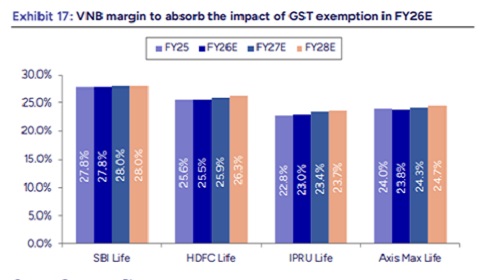
Valuations and Top Picks
Valuations for life insurers have corrected in recent years, with the sector trading at 1-year forward P/EV of ~2.0x, compared with 2.6x in 2020. This de-rating, according to the report, presents an attractive entry point for investors.
PL Capital’s top picks in the space are HDFC Life Insurance and Max Financial Services, both well-positioned to benefit from product diversification and robust distribution platforms.
- HDFC Life Insurance: Initiated with a BUY rating and target price of ?900. Strong growth in protection and NPAR, coupled with deeper penetration in Tier-2 and Tier-3 markets, underpin its long-term story.
- Max Financial Services: Also rated BUY with a target price of ?1,850. Its innovative product portfolio and expanded reach through Axis Bank’s distribution network make it a consistent performer.
- ICICI Prudential Life Insurance: Rated BUY with a target price of ?725, supported by its focus on protection and non-linked products.
- SBI Life Insurance: Rated HOLD with a target price of ?1,925, given its high banca concentration and relatively slower diversification.
With structural demand intact, under-penetration offering vast headroom, and regulatory reforms setting the stage for deeper market development, India’s life insurance industry is poised for sustained double-digit growth over the next decade. Investors, policymakers, and industry stakeholders can expect the sector to play an increasingly central role in India’s financialization story.
Above views are of the author and not of the website kindly read disclaimer







